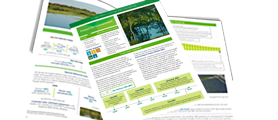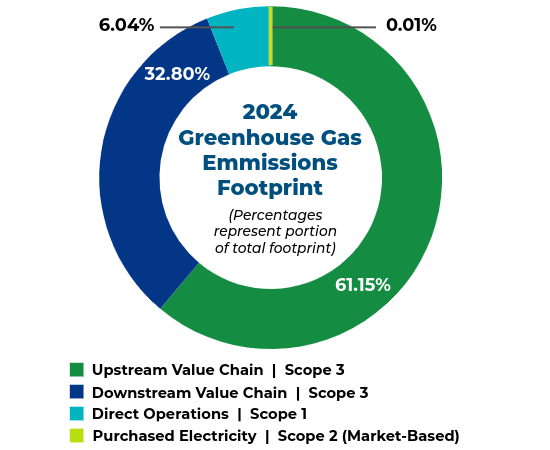
Climate Change
According to leading climate scientists, climate change is a range of global phenomena caused predominantly by burning fossil fuels; it includes not just global warming, but also rising sea level, ice melting, extreme weather events and shifts in seasonal events.1 Changes in nature as a result of climate change and society's response to those changes can affect the future of our businesses.
At Altria, we're committed to doing our part and engaging responsibly with governments and society to limit the damaging impacts of climate change. We're focused on aligning our operational and value chain business practices with science-based methodology.
Variations in weather patterns caused by climate change may impact our ability to procure high quality tobacco and other key direct materials to support our operations. Through our Business Continuity Planning process, we proactively engage suppliers to maintain the availability and sustainability of material supply chains, such as monitoring inventory levels and adjusting buying patterns of these materials if needed.
Our Progress
Science Based Targets Initiative & Net-zero
We recognize the importance of setting ambitious, science-based environmental targets to drive progress and hold ourselves accountable. In 2020, we set 2030 targets approved by the Science Based Targets initiative (SBTi). In 2023, we essentially achieved all of those targets years ahead of schedule. That same year, we submitted new targets to SBTi. Our new 2030 targets were validated by SBTi in 2024 and align with levels required to stay below 1.5⁰C of warming and avoid the most catastrophic impacts of climate change.
Target Reset and
Net-Zero Roadmap
2030 Climate Change Targets Set in 2023:
Climate Change1
Near-Term Reduction Targets
Reduce absolute GHG emissions 65%
Reduce absolute GHG emissions 30.3%
Reduce absolute GHG emissions 42%
by 2030 from a 2022 base year
Long-Term Reduction Targets
Reach net-zero across
the value chain by 2050
Reduce absolute GHG emissions 90%
Reduce absolute GHG emissions 72%
Reduce absolute GHG emissions 90%
by 2050 from a 2022 base year
Near-Term Supporting Targets
Annually 100%
by 2030
Commit to across primary deforestation- linked commodities with a
target date of 2025
Greenhouse Gas Emissions Footprint
We're implementing and exploring projects throughout our businesses to reduce these emissions.
Scope 1 & 2 Emissions
Scope 1 GHG emissions stem from our direct operations, such as gasoline used by our field sales force or natural gas boilers at our manufacturing facilities.2 Scope 2 GHG emissions are from the electricity we purchase to run our facilities and offices.
Scope 3 Emissions
Scope 3 emissions include those across our entire value chain, both upstream including suppliers and tobacco growing, to downstream including disposal of our products.3
Forest, Land and Agriculture (FLAG) is a new guidance released by the SBTi which provides a framework to help companies in land-intensive sectors to set emissions reduction targets related to land use. Our leaf suppliers participate in industry programs that support sustainable agricultural practices.
Renewable Electricity
In 2020, we signed a renewable Virtual Power Purchase Agreement to offset organization-wide electricity consumption. Operational as of January 2023, the wind farm project is bringing new, additional clean electricity to the U.S. electric grid.
The project also is generating renewable energy credits, offsetting our use of fossil fuel energy and providing a clear path to achieve our renewable electricity and operational GHG emissions targets ahead of schedule.
Task Force on Climate-related Financial Disclosures (TCFD)
We conducted an enterprise level risk assessment aligned with the TCFD disclosure framework and released our first TCFD report. We aim to further integrate climate risks and opportunities into our Enterprise Risk Management and Business Planning processes. The TCFD disclosure framework supports standardized climate-related financial disclosures to promote more informed investment, credit and insurance underwriting decisions. Read our TCFD report and annual index.
You May Also Like












